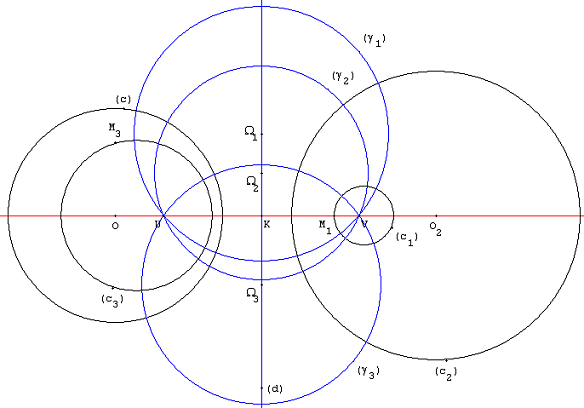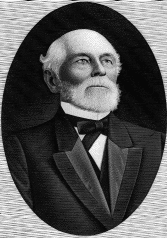|
Perspectivity
In geometry and in its applications to drawing, a perspectivity is the formation of an image in a picture plane of a scene viewed from a fixed point. Graphics The science of graphical perspective uses perspectivities to make realistic images in proper proportion. According to Kirsti Andersen, the first author to describe perspectivity was Leon Alberti in his ''De Pictura'' (1435). In English, Brook Taylor presented his ''Linear Perspective'' in 1715, where he explained "Perspective is the Art of drawing on a Plane the Appearances of any Figures, by the Rules of Geometry". In a second book, ''New Principles of Linear Perspective'' (1719), Taylor wrote :When Lines drawn according to a certain Law from the several Parts of any Figure, cut a Plane, and by that Cutting or Intersection describe a figure on that Plane, that Figure so described is called the ''Projection'' of the other Figure. The Lines producing that Projection, taken all together, are called the ''System of Rays''. And w ... [...More Info...] [...Related Items...] OR: [Wikipedia] [Google] [Baidu] |
Desargues's Theorem
In projective geometry, Desargues's theorem, named after Girard Desargues, states: :Two triangles are in perspective ''axially'' if and only if they are in perspective ''centrally''. Denote the three vertices of one triangle by and , and those of the other by and . ''Axial perspectivity'' means that lines and meet in a point, lines and meet in a second point, and lines and meet in a third point, and that these three points all lie on a common line called the ''axis of perspectivity''. ''Central perspectivity'' means that the three lines and are concurrent, at a point called the ''center of perspectivity''. This intersection theorem is true in the usual Euclidean plane but special care needs to be taken in exceptional cases, as when a pair of sides are parallel, so that their "point of intersection" recedes to infinity. Commonly, to remove these exceptions, mathematicians "complete" the Euclidean plane by adding points at infinity, following Jean-Victor Poncelet ... [...More Info...] [...Related Items...] OR: [Wikipedia] [Google] [Baidu] |
Perspective (geometry)
Two figures in a plane are perspective from a point ''O'', called the center of perspectivity, if the lines joining corresponding points of the figures all meet at ''O''. Dually, the figures are said to be perspective from a line if the points of intersection of corresponding lines all lie on one line. The proper setting for this concept is in projective geometry where there will be no special cases due to parallel lines since all lines meet. Although stated here for figures in a plane, the concept is easily extended to higher dimensions. Terminology The line which goes through the points where the figure's corresponding sides intersect is known as the axis of perspectivity, perspective axis, homology axis, or archaically, perspectrix. The figures are said to be perspective from this axis. The point at which the lines joining the corresponding vertices of the perspective figures intersect is called the center of perspectivity, perspective center, homology center, pole, or arch ... [...More Info...] [...Related Items...] OR: [Wikipedia] [Google] [Baidu] |
Homography
In projective geometry, a homography is an isomorphism of projective spaces, induced by an isomorphism of the vector spaces from which the projective spaces derive. It is a bijection that maps lines to lines, and thus a collineation. In general, some collineations are not homographies, but the fundamental theorem of projective geometry asserts that is not so in the case of real projective spaces of dimension at least two. Synonyms include projectivity, projective transformation, and projective collineation. Historically, homographies (and projective spaces) have been introduced to study perspective and projections in Euclidean geometry, and the term ''homography'', which, etymologically, roughly means "similar drawing", dates from this time. At the end of the 19th century, formal definitions of projective spaces were introduced, which extended Euclidean and affine spaces by the addition of new points called points at infinity. The term "projective transformation" originated in ... [...More Info...] [...Related Items...] OR: [Wikipedia] [Google] [Baidu] |
Projective Geometry
In mathematics, projective geometry is the study of geometric properties that are invariant with respect to projective transformations. This means that, compared to elementary Euclidean geometry, projective geometry has a different setting (''projective space'') and a selective set of basic geometric concepts. The basic intuitions are that projective space has more points than Euclidean space, for a given dimension, and that geometric transformations are permitted that transform the extra points (called "Point at infinity, points at infinity") to Euclidean points, and vice versa. Properties meaningful for projective geometry are respected by this new idea of transformation, which is more radical in its effects than can be expressed by a transformation matrix and translation (geometry), translations (the affine transformations). The first issue for geometers is what kind of geometry is adequate for a novel situation. Unlike in Euclidean geometry, the concept of an angle does not ... [...More Info...] [...Related Items...] OR: [Wikipedia] [Google] [Baidu] |
Duality (projective Geometry)
In projective geometry, duality or plane duality is a formalization of the striking symmetry of the roles played by Point (geometry), points and Line (geometry), lines in the definitions and theorems of projective planes. There are two approaches to the subject of duality, one through language () and the other a more functional approach through special Map (mathematics), mappings. These are completely equivalent and either treatment has as its starting point the axiomatic version of the geometries under consideration. In the functional approach there is a map between related geometries that is called a ''duality''. Such a map can be constructed in many ways. The concept of plane duality readily extends to ''space duality'' and beyond that to duality in any finite-dimensional projective geometry. Principle of duality A projective plane may be defined axiomatically as an incidence structure, in terms of a set of ''points'', a set of ''lines'', and an incidence relation that de ... [...More Info...] [...Related Items...] OR: [Wikipedia] [Google] [Baidu] |
Technical Drawing
Technical drawing, drafting or drawing, is the act and discipline of composing drawings that visually communicate how something functions or is constructed. Technical drawing is essential for communicating ideas in industry and engineering. To make the drawings easier to understand, people use familiar symbols, perspectives, units of measurement, notation systems, visual styles, and page layout. Together, such conventions constitute a visual language and help to ensure that the drawing is unambiguous and relatively easy to understand. Many of the symbols and principles of technical drawing are codified in an international standard called ISO 128. The need for precise communication in the preparation of a functional document distinguishes technical drawing from the expressive drawing of the visual arts. Artistic drawings are subjectively interpreted; their meanings are multiply determined. Technical drawings are understood to have one intended meaning. A draftsman is ... [...More Info...] [...Related Items...] OR: [Wikipedia] [Google] [Baidu] |
University Of Brighton
The University of Brighton is a public university based in Brighton on the south coast of England. Its roots can be traced back to 1858 when the Brighton School of Art was opened in the Royal Pavilion. It achieved university status in 1992. The University focuses on practical, creative, and professional education, with the majority of degrees awarded also recognised by professional organisations or leading to professional qualifications. Subjects include pharmacy, engineering, ecology, computing, art, architecture, geology, nursing, teaching, sport science, journalism, criminology and business. It has around 18,000 students and 2,400 staff. The QS World University Rankings places the university within the top 100 internationally for Art and Design. History 1858—1900: Early years In 1858 the Brighton School of Art opened its doors to its first 110 students, in rooms by the kitchens of the Royal Pavilion. It moved in 1876 to its own building in Grand Parade, with the Pr ... [...More Info...] [...Related Items...] OR: [Wikipedia] [Google] [Baidu] |
Rice University
William Marsh Rice University, commonly referred to as Rice University, is a Private university, private research university in Houston, Houston, Texas, United States. Established in 1912, the university spans 300 acres. Rice University comprises eight undergraduate, graduate and professional schools, including Rice University School of Humanities, School of Humanities, Rice University School of Social Sciences, School of Social Sciences, Jesse H. Jones Graduate School of Business, George R. Brown School of Engineering, Wiess School of Natural Sciences, Susanne M. Glasscock School of Continuing Studies, Rice University School of Architecture, Rice School of Architecture, and Shepherd School of Music. Established as William M. Rice Institute for the Advancement of Literature, Science and Art after the murder of its namesake William Marsh Rice, Rice has been a member of the Association of American Universities since 1985 and is Carnegie Classification of Institutions of Higher ... [...More Info...] [...Related Items...] OR: [Wikipedia] [Google] [Baidu] |
John Wiley & Sons
John Wiley & Sons, Inc., commonly known as Wiley (), is an American Multinational corporation, multinational Publishing, publishing company that focuses on academic publishing and instructional materials. The company was founded in 1807 and produces books, Academic journal, journals, and encyclopedias, in print and electronically, as well as online products and services, training materials, and educational materials for undergraduate, graduate, and continuing education students. History The company was established in 1807 when Charles Wiley opened a print shop in Manhattan. The company was the publisher of 19th century American literary figures like James Fenimore Cooper, Washington Irving, Herman Melville, and Edgar Allan Poe, as well as of legal, religious, and other non-fiction titles. The firm took its current name in 1865. Wiley later shifted its focus to scientific, Technology, technical, and engineering subject areas, abandoning its literary interests. Wiley's son Joh ... [...More Info...] [...Related Items...] OR: [Wikipedia] [Google] [Baidu] |
Breuil - Diverses Methodes Universelles Et Nouvelles, En Tout Ou En Partie Pour Faire Des Perspectives, 1642 - 177384
Breuil may refer to the following: People * Beta Breuil (1876–after 1918), American script editor and screenwriter * Henri Breuil (1877–1961), French archeologist and ethnographer * Alphonse du Breuil (1811–1885), French botanist * Christophe Breuil (born 1968), French mathematician Places France * Breuil, Somme, in the Somme ''département'' *Breuil-Barret, in the Vendée ''département'' * Breuil-Bois-Robert, in the Yvelines ''département'' * Breuil-la-Réorte, in the Charente-Maritime ''département'' * Breuil-le-Sec, in the Oise ''département'' * Breuil-le-Vert, in the Oise ''département'' * Breuil-Magné, in the Charente-Maritime ''département'' * Breuil-sur-Vesle, in the Marne ''département'' Italy *Breuil-Cervinia Breuil-Cervinia (; ; Valdôtain: ), officially Le Breuil from September 2023, is a of the ''comune'' of Valtournenche, Italy. It is a winter and summer tourist resort. Etymology The name ''Breuil-Cervinia'' is a fusion of two terms. On th ... [...More Info...] [...Related Items...] OR: [Wikipedia] [Google] [Baidu] |
Perspective Projection
Linear or point-projection perspective () is one of two types of graphical projection perspective in the graphic arts; the other is parallel projection. Linear perspective is an approximate representation, generally on a flat surface, of an image as it is seen by the eye. Perspective drawing is useful for representing a three-dimensional scene in a two-dimensional medium, like paper. It is based on the optical fact that for a person an object looks N times (linearly) smaller if it has been moved N times further from the eye than the original distance was. The most characteristic features of linear perspective are that objects appear smaller as their distance from the observer increases, and that they are subject to , meaning that an object's dimensions parallel to the line of sight appear shorter than its dimensions perpendicular to the line of sight. All objects will recede to points in the distance, usually along the horizon line, but also above and below the horizo ... [...More Info...] [...Related Items...] OR: [Wikipedia] [Google] [Baidu] |




